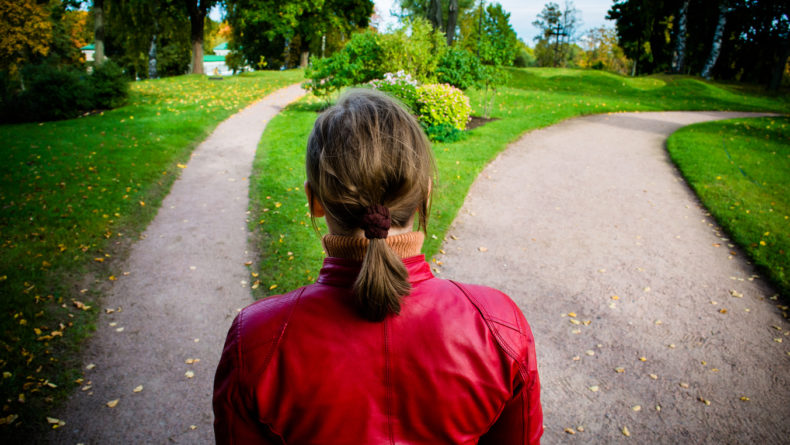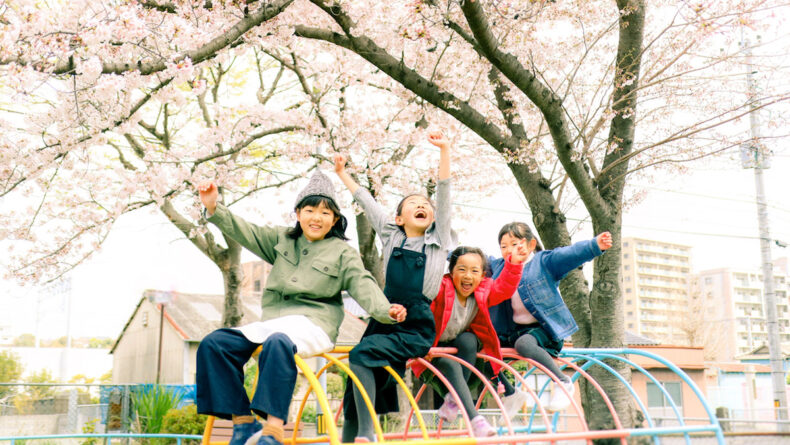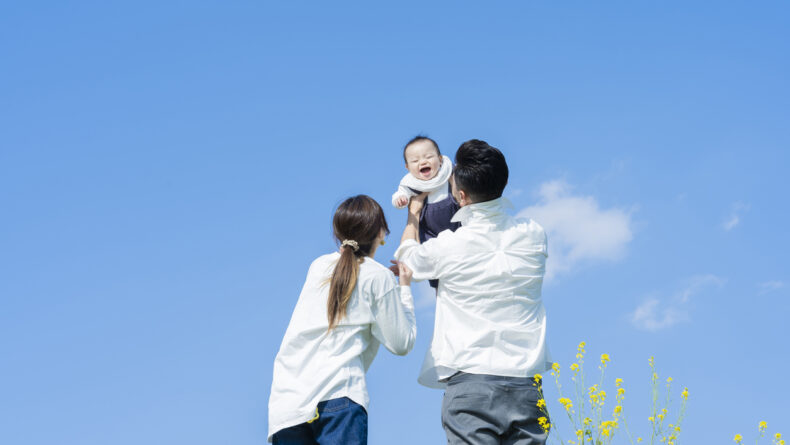Been There, Learnt That: On Japan’s Habitual ‘Labeling’ Of Bicultural Kids
Half Or Double, It's About Time We Let Them Speak For Themselves
In Japan, Japanese are nihonjin and foreigners are gaikokujin and never the twain shall meet. But what does this mean for our bicultural offsprings?
The term hafu (literally, half) is commonly used in Japan for anyone who has one Japanese parent and one from another cultural background or nationality. The term grates on many foreign parents because it implies that the non-Japanese side of their background somehow renders them “incomplete.”
I certainly disliked the term when I became a mom for the first time following the birth of my son. I spent a lot of time and energy earnestly asking people, friends and strangers alike, to refer to my child as “daburu” or “double.” I even wrote an article for a bilingual magazine, entitled “Please Don’t Call My Baby a ‘Half’” and advocating for the use of the term “double” instead.
Looking back at the article now, I cringe inwardly. By the time the second of my two daughters arrived to complete my trio of kids, I was beginning to tire of the “what to call bicultural children” conversation. I began to think, “Why do we need to label them at all? They are kids who just happen to have parents from two different backgrounds. Get over it already!” Older and wiser, I now know that it isn’t that simple.
Why do we need to label them at all? They are kids who just happen to have parents from two different backgrounds.
Homogeneity and the urge for labels
Even though intercultural marriage is nothing unusual in Japan these days, the historically homogenous nature of the Japanese society demands labels for anyone who isn’t “strictly Japanese.” So even though a bicultural child may be educated in the local system, speak and write Japanese as well as the next child and completely identify with the Japanese culture, their face is going to forever invite labels.
My older daughter, now a college student, shared her views with me: “I know that it used to bother you when people called us ‘hafu’ when we were little, but it doesn’t offend me because it isn’t really used in a derogatory way,” she says. “If it was ‘gaijin’, I’d be upset. If people wanted to tease me at school, they would use ‘gaijin’. But ‘hafu,’ on the other hand, tends to be associated with ‘kawaii’ (cute). So for me, I guess it depends in what context the term is being used.”
Her older brother, who is also in college, shrugs off labels. “I do have some bicultural friends who get upset about being called ‘hafu’, and I get that. But for me, it’s just a word. It doesn’t define me, so I don’t let it bother me.”
‘But for me, [hafu is] just a word. It doesn’t define me, so I don’t let it bother me.’
Not Half, Nor Double
Megumi Nishikura, the daughter of an American mother and Japanese father, is one of the filmmakers behind the groundbreaking documentary Hafu (2013), which tells the stories of six bicultural people, most of them young adults at the time.
“In the course of making the Hafu film, I have met and interacted with hundreds of mixed-Japanese. I find the vast majority prefers the term ‘hafu’ over all other available terms. There are certainly those who don’t love it, but acknowledge that no better term exists,” notes Megumi. “For many, the term ‘double’ makes them feel uncomfortable because it both connotes superiority (I am twice as good as you) and puts unnecessary pressure on them to be a ‘bridge’ or cultural ambassadors to both countries.”
‘For many, the term ‘double’ makes them feel uncomfortable because it both connotes superiority […]’
Megumi is currently involved with the Hapa Japan Database Project through the University of Southern California, a project attempting the first large scale survey of mixed-Japanese around the world.
“Until now, all of our answers to questions such as ‘What is your preferred term of self-identification?’ have been anecdotal.,” Megumi says. “The Hapa Japan Database Project seeks to put quantifiable numbers behind such questions and I thoroughly encourage the mixed-Japanese community to take the survey.”
Media image and mixed messages
Japanese society sometimes sends out mixed messages about how it views bicultural people. There are plenty of successful and popular hafu models and TV personalities. For example, former newsreader Christel Takigawa, the daughter of French and Japanese parents, won hearts in 2013 when she delivered a passionate presentation in fluent English and French to the International Olympic Committee in support of Tokyo’s bid for the 2020 Summer Games.
However, when Ariana Miyamoto was crowned as the first biracial Miss Universe Japan in 2015, the decision met with controversy from some quarters, with critics saying she wasn’t “Japanese enough” to represent her country. Ariana, who has a Japanese mother and African-American father, rose above the criticism with dignity and made it to the top 10 of the international Miss Universe pageant that year. She paved the way for the second bicultural Miss Universe Japan in 2016, when Priyanka Yoshikawa took the title. Priyanka is of Japanese and Indian heritage.
‘Half: The Cute Genius’ is a painful myth
There is some pressure children growing up with the hafu label, such as society’s idea that hafu people are “cute.” Naturally, every parent thinks their own child is adorable, but it can be hard for children who don’t necessarily fit the Japanese ideal of “kawaii,” especially for girls. One friend’s bicultural daughter took after her American mother, developing a curvy figure in her teens. By Western standards she was stunning, but her curves didn’t suit the Japanese fashion for girls her age, and she went through a period of doubting herself for being bigger than most of her peers. Fortunately, she came to terms with her looks and is now a confident young adult.
[…] it’s important to ask and listen to how your child feels about the term they want to use to self-identify, which may change over time.
Another stereotype of bicultural children is that they will grow up bilingual. While such children may have more opportunities to develop skills in a second language than the average child, as parents we know it isn’t a given if your kids are attending Japanese schools. I spent a considerable amount of time, energy and money to ensure my three have grown up speaking, reading and writing in English. It doesn’t come naturally, to the contrary of what many believe.
Megumi Nishikura shares her thoughts for bicultural families raising children in Japan. “While I can understand that parents want to be positive and increase the self-esteem of their young children, it’s important to ask and listen to how your child feels about the term they want to use to self-identify, which may change over time.”
I’ll leave the final word to my youngest child, now in high school. When I sent her a wordy text message, telling her about this article and asking if she minded being called a ‘hafu’, her reply simply said, “Why should I? It’s what I am.”
“Been There, Learnt That” is a monthly column in which Louise George Kittaka discusses various issues she went through when raising her three children in Japan. If you have any questions for Louise on a topic related to raising bicultural children in or out of Japan, send us an e-mail at editorial@gplusmedia.com or leave us a comment. Louise will answer your questions in her next article.
















Leave a Reply